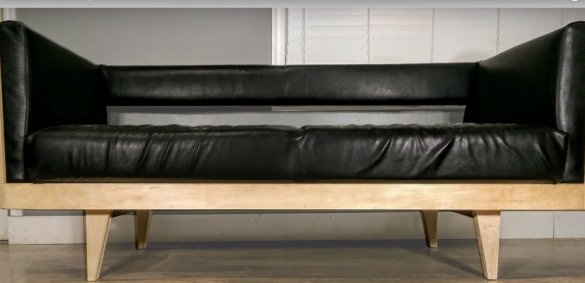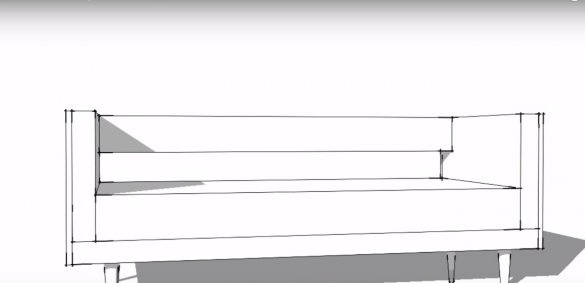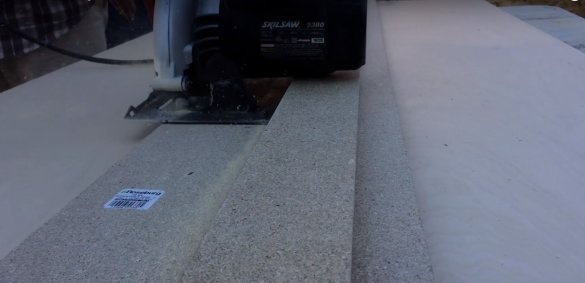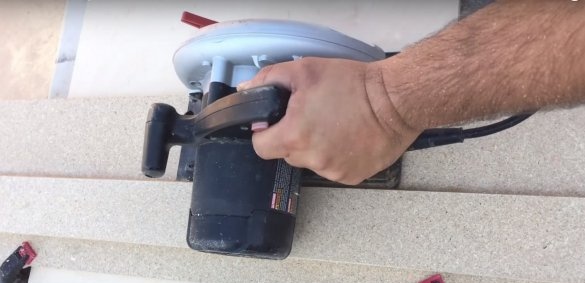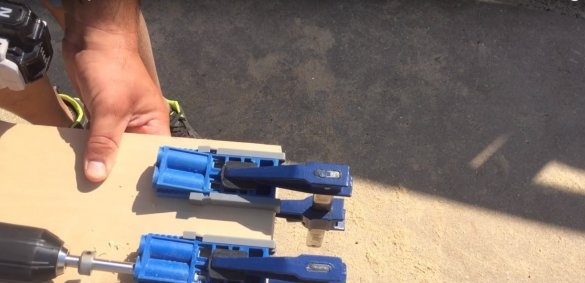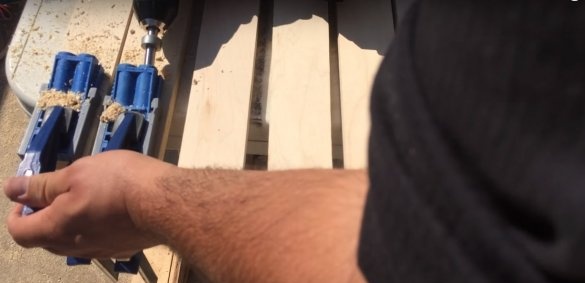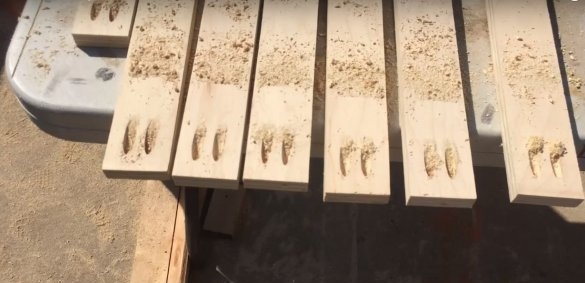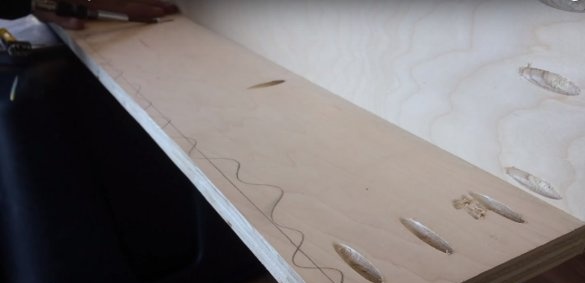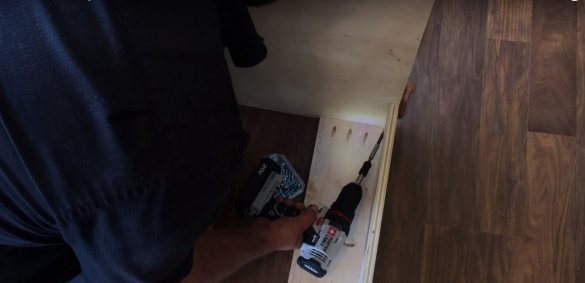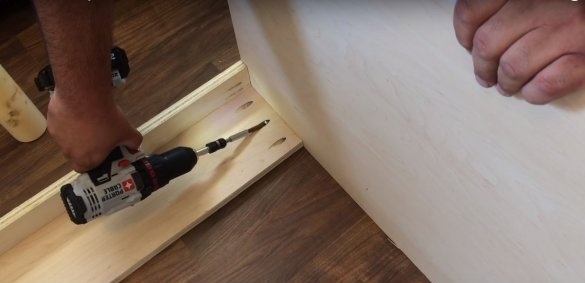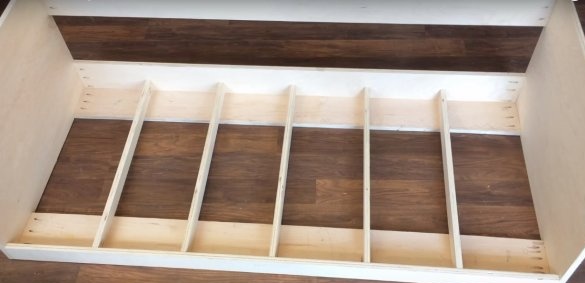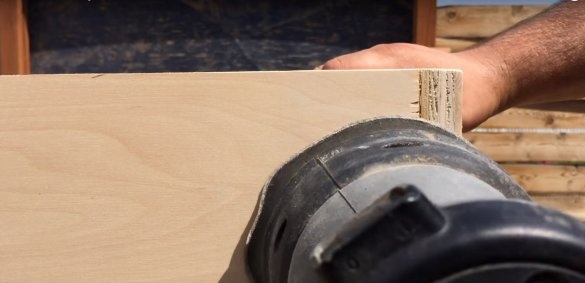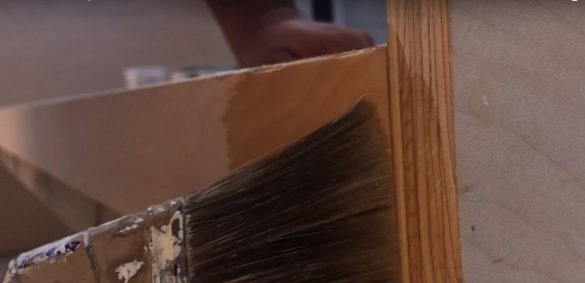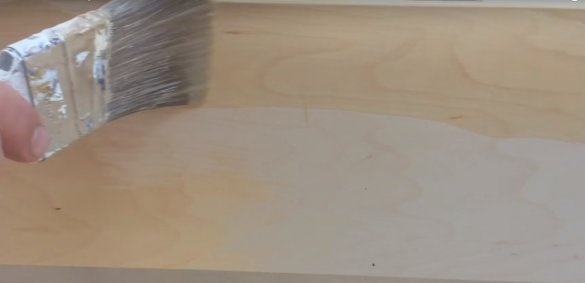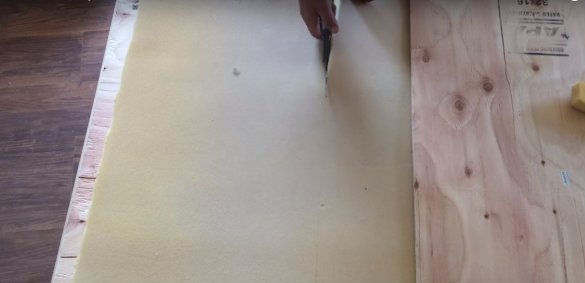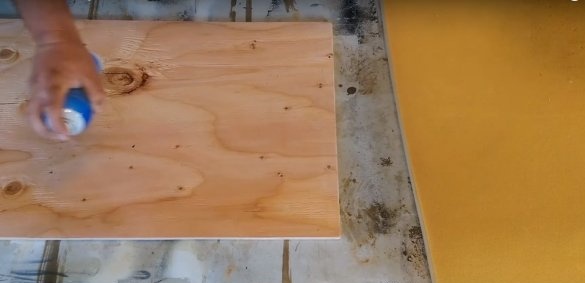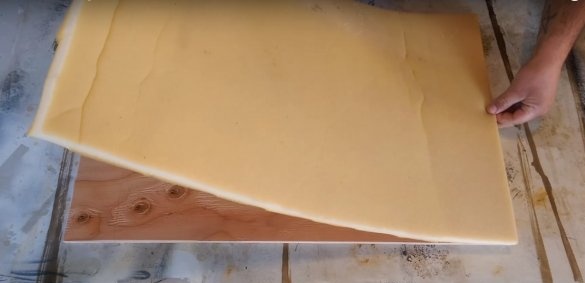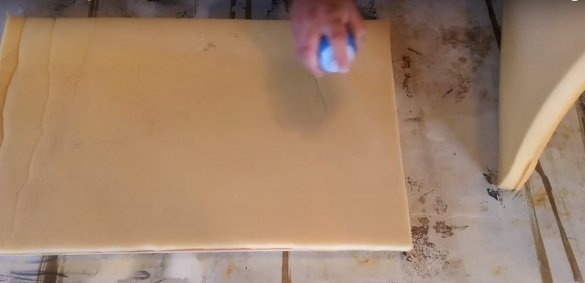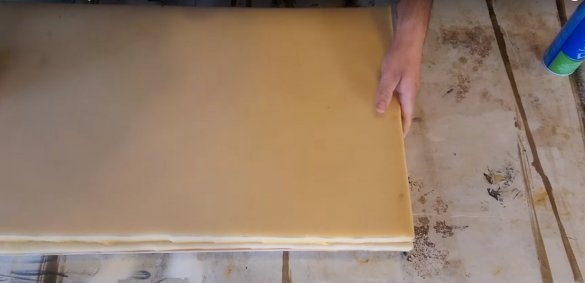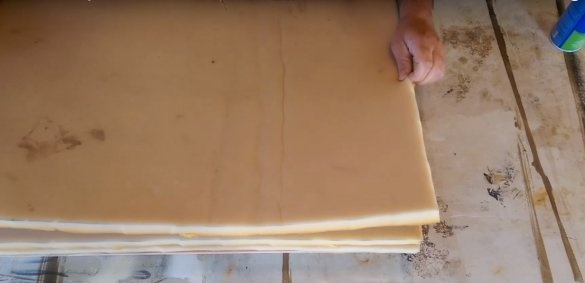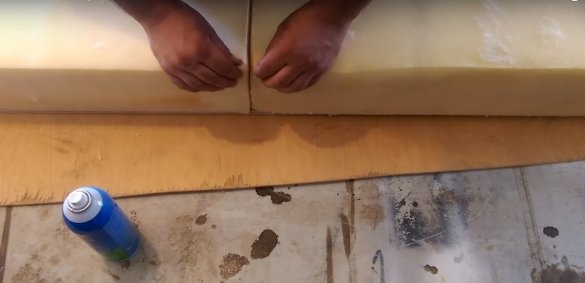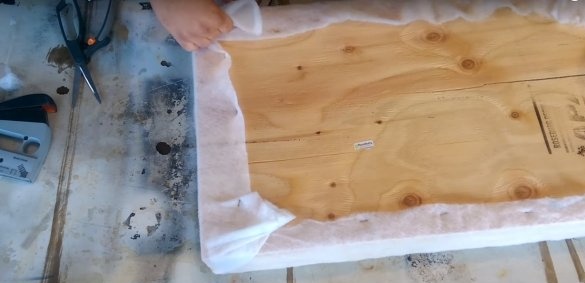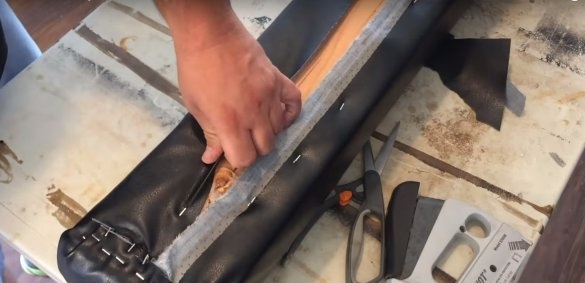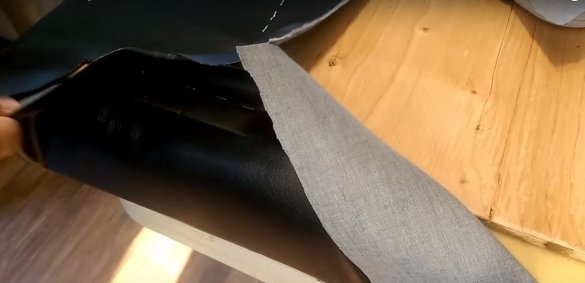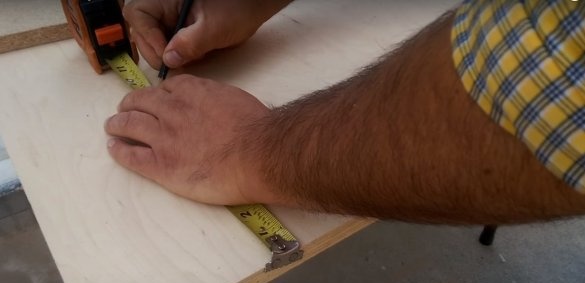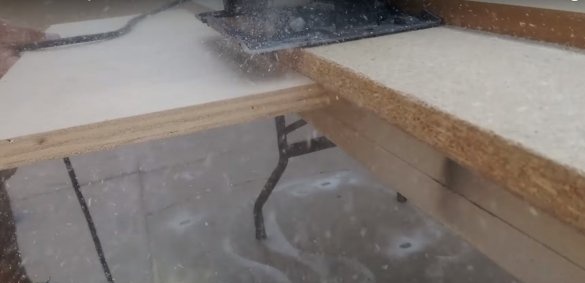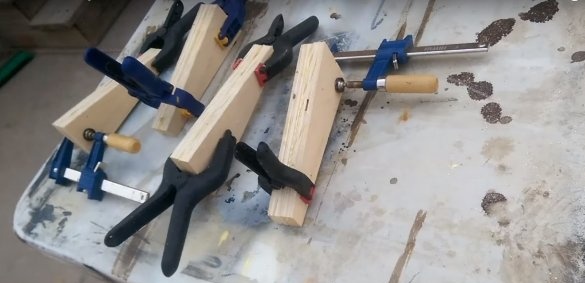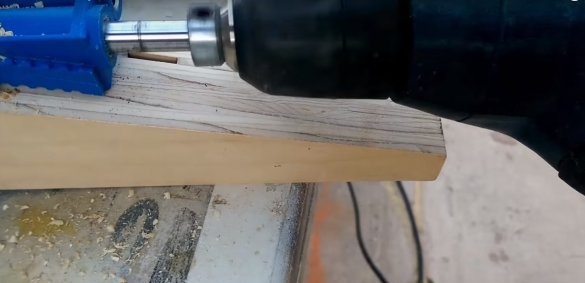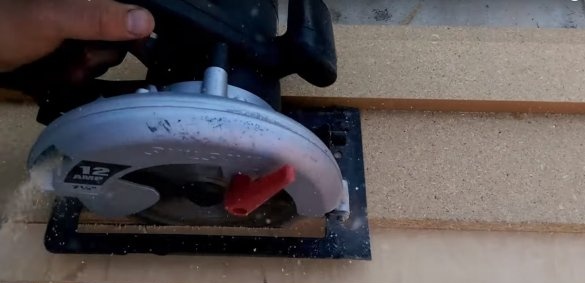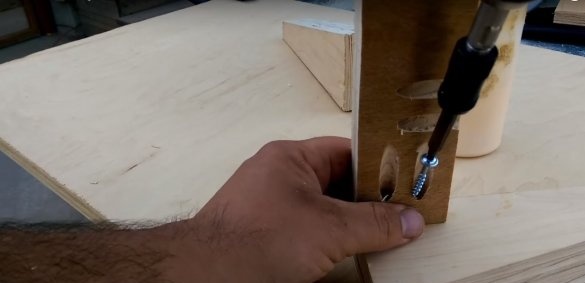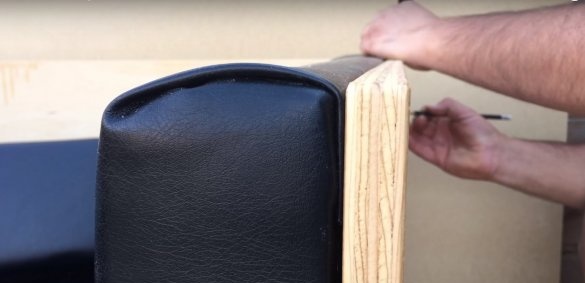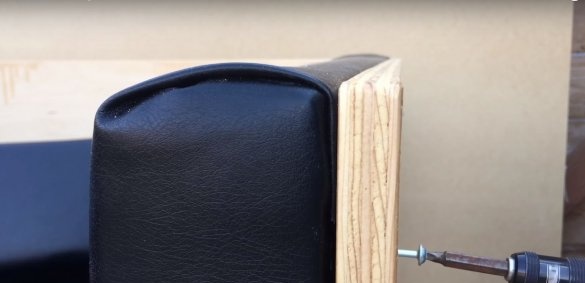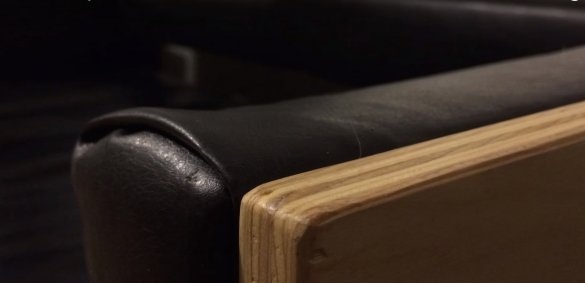The basic models of plywood-based sofas are just what a beginner needs to decide to master the production of soft of furniture. First, you will learn the basic basics of building a framework. Secondly, try your hand at hauling upholstered furniture.
Such projects are relatively affordable, require minimal skills, but can significantly advance on the difficult path of a novice furniture maker. You will not need so many tools, but the choice of materials for hauling the sofa will have to be approached thoroughly.
The frame of the sofa is made of plywood and chipboard, and its parts are interconnected by joint, without the use of groove joints. For sheathing, the author used leatherette and furniture foam. The fastening points of the casing are covered with a frame and do not require additional camouflage.
To make a simple plywood sofa do it yourself you will need:
Materials:
- plywood, chipboard with a thickness of 20 - 25 mm for the manufacture of a sofa frame;
- plywood with a thickness of 7 - 8 mm as the basis for the soft elements of the seat, calf and back;
- furniture foam 30 - 35 mm thick, thicker;
- furniture foam 100 mm thick for the manufacture of seats;
- thin foam rubber with a thickness of about 5 - 10 mm;
- varnish for processing plywood frame;
- tight leatherette;
- metal corners for additional fixation of legs;
- non-combustible glue for bonding foam, preferably in the form of an aerosol;
- glue for woodwork;
- furniture screws, self-tapping screws.
Instruments:
- manual circular or jigsaw;
- grinder;
- drill;
- screwdriver;
- mechanical furniture stapler and staples;
- a conductor for drilling holes at an angle;
- scissors, clerical knife;
- clamps;
- wide paint brush;
- a square, a long ruler and a construction tape measure;
- marker.
Manufacturing process
First step: determine the dimensions and design of the sofa
Before proceeding with the manufacture of the sofa, determine its design and overall dimensions. It will be good if you sketch a sketch where you depict the main elements of the sofa and their sizes.
In case you are not at all inclined towards drawing, take a photo of a suitable model from the Internet. It will be better if the sofa is photographed from several angles and the nuances of its design are clearly visible.
This sofa is made of a minimum amount of materials.Of course, it would be possible to significantly complicate the design of the frame, but this project is valuable precisely because it is extremely simple and understandable as the first training projectile.
Step Two: Making Frame Parts
To make the frame, the author uses plywood and laminated particleboard. If you do not have plywood of the desired thickness, you can glue two or even three plates into one, using carpentry glue and placing the workpiece under the press for a couple of days.
Start by marking up the basic elements of the frame. You can prepare smaller details already in the process of work. Mark and cut the workpieces using a hand circular or jigsaw. Given the volume of work, a high-quality hacksaw for wood can also cope with this task.
The edges of the parts must be sanded manually with fine grain sandpaper.
Step Three: Frame Assembly
The frame of the sofa is assembled on jointless joints of parts joint to joint. Their fastening is carried out mainly flush, therefore, the connections are not visible on the front parts of the frame. This is achieved thanks to such a useful assistant as a conductor for drilling holes at the desired angle.
The frame of the frame consists of its side parts (former) and 4 longitudinal parts. The latter are fixed in pairs, at right angles and play the role of stiffeners. A longitudinal strut is provided at the top of the frame, which adds rigidity to the frame and plays the role of a backrest.
The frame of the sofa is sewn with a crate on the edge. They will serve as the basis for the mattress. The thinner the plywood you use in the manufacture of the sofa seat, the thicker the crate should be installed.
For strength, use glue during the assembly of the frame. Additional stiffness will be given to it by metal connecting corners, which can be used to strengthen the joints of the main supporting elements of the frame.
If desired, use beech lamellas over the crate. They create a flexible spring base for the mattress and can significantly increase the life of the foam cover.
Fourth step: fabrication of soft structural elements
In this sofa model, all the soft elements of the sofa have a flexible plywood base. Prepare parts from plywood or thin chipboard.
Mark up the foam. To do this, lay the plywood blanks on a foam board and draw a marker around the contour. Make an allowance of 1 cm and cut out the foam rubber according to the marking.
We will analyze the technology for assembling soft elements of a sofa using the example of its past. Cover the blank from plywood with a uniform layer of glue and stick the first layer of foam rubber (if you, like the author, use thin plates of foam rubber). Apply a layer of glue and stick a second layer of foam. Repeat this operation, depending on the desired thickness of the foam layer.
Glue a layer of thin foam rubber or synthetic winterizer, wrapping it with the blank and securing the edges of the foam with brackets on the back of the plywood.
By the same principle, wrap the past with upholstery fabric and fix it with brackets, laying folds and forming corners.
For tight pillows, choose a dense fabric whose surface is easy to clean. For the manufacture of upholstered furniture, buy only furniture foam rubber of high density. Conventional foam is not intended for such purposes and such intensive use.
Step Five: Making and Installing the Feet
To make the legs, the author used plywood glued in two layers. Prepare a pre-glued shield, mark the parts and cut them out. Sand the legs thoroughly before painting or varnishing.
The author connected the legs in pairs through the rail and in this form installed on the sofa. Please note that additional fixing of the legs with metal corners may be required for strength.
You can also purchase ready-made wooden legs in the furniture hardware store, where they can be found in a wide variety of shapes and sizes.
Sixth step: installing soft structural elements
In this design of the sofa, the upholstery is fastened through the walls of the plywood frame. In this case, the hats of the screws are on the outside of the frame. If desired, they can be closed with plastic caps or putty.

